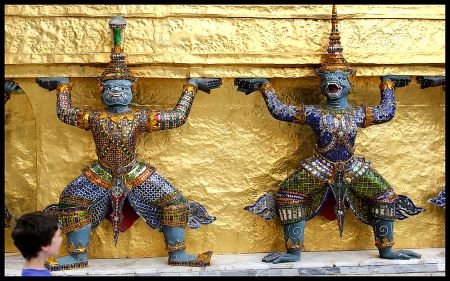Architectural imagination of Mount Meru
Hindu temples have rooted traditions in practice since the beginning. Divine architectural imagination of Mount Meru in temples is a paradigm. Interestingly, scholars have divided opinions regarding location of Mount Meru.

Designs of temples:
Mount Meru is the center of the universe. Hence, the solar planet system and innumerable galaxies’ stars move around it in their respective orbits. Not only Hinduism but Buddhism and Jainism also have the same theory. The mountain is agreeably known as the residence of the gods, by all these creeds.
China thankfully consumed the idea of Meru as she entered Buddhism. On the other hand, the Yunani people had the same concept in the name of Mount Olympus. The corollary design of Pagodas in China and Pyatthats in Burma reflects the same architecture. However, the biggest manifestation of Mount Meru is the Angkor Wat temple in Cambodia.
The five Shikharas of Angkor Wat resemble the very imagination of Mount Meru—additionally, the harmonious transition of temple management from Hindu origin to later Buddhism is commendable. In the same way, this temple in the initial phase adopted design ideas from Indian architecture. Later, it proceeded with Khmer concepts mixed in various cultural attributes from the vicinity.
About 13000 sq ft of stonework depicts Vedic culture and the Dev-Danav (God-Demon) myths. The 12th-century Angkor Wat Temple artfully describes the story of Ocean Milk on the stone walls. Amazingly, there is a beautiful narration of Apsaras who are born out of foam in the ocean and serving Lord Vishnu. Apsaras are gorgeous cosmic women with all merits attributed to their feminist formation. Despite the flocks of new inventions, stone carving is an essential part of temple construction.
Irresistibly, every Hindu temple with a high spire reminds us of the spiritual presence of Mount Meru. Typically, the Garbhagriha of the temple remains immediately below the highest spire. The temple line connecting the garbhagriha and the spire above extends to align with Mount Meru. So, the physical temple spiritually rises to connect with the center of the universe via fully embedded belief.
Gods dwelling on Mount Meru:
Mount Meru accords with the central idea of the universe, states Hinduism. But profound descriptions of the invisible mountain make it divine and venerable. Precisely, it is not manly territory. So, the sacred hill is highly inhabited by deities including the most revered one, the creator of the universe. Every beautiful narration of heaven by sages, philosophers, and poets through knowledge of the Vedas simplifies Mount Meru as the only home to Brahma.

Image: Picryl
The Hindu religion is clear about allocations on the Mountain. For instance, Indra, the leader of the gods, lives in East direction. Similarly, Varun is in the western part. Next, every common Hindu knows meticulously that Kuber resides in the Northern region of Mount Meru. Conversely, the god of justice and death, Yamraj lives in the southern territory of the Mount and rules the hell.
Say it axis mundi, or existential axis, Mount Meru is the origin and ocean of spirituality. At the same time, it is the final verdict of human life after death, as heaven is on top of it, while hell is at the bottom. Demons have a place at the bottom or base, while deities reside uphill. However, the correct location of this mountain is unknown despite the belief that it is in the Himalayas. It may be in the ranges of Aravalli as well. Someone says it is the Mount Kailash near Maan Sarovar.
Hinduism is a symbol-centric religion, which assumes Mount Meru as the center channel in humans that connects energy points or Chakras in the body. Hence, more spiritual practices of an individual bring balancing of the energy centers uplifting the consciousness stage by stage. Interestingly, as Mount Meru is the cosmic axis, spiritual gains are same way the central goals of every Hindu.
Indian and Southeast temples:
Hindu temples, in any part of the world largely symbolize the cosmic order of the universe. Furthering the central idea of spires as Mount Meru, the bands of intricate designs create the mammoth in the mandir campus. Sun, moon, and stars besides idols carved for wall decoration, bring down the whole universe symbolically on the ground. Every symbol and geometrical layout in the structure displays its pure significance for spiritual ascendance.
Hindu temples are, therefore, representations of the cosmic force. Still, the free movement of the devotees lays a perfect transition medium to attain the ultimate sacred wishes. The kings of ancient times maneuvered to erect gigantic temple structures for a dual purpose. To declare themselves as the guardian of the religion. Secondly, extraordinarily marvelous temple sites evoked the interest of common citizens in the culture and religious traditions of the kingdom.
The Koneshvaram temple in Sri Lanka depicted reverence for Mount Meru with its towering edifice. The distance between Cambodian Angkor Wat and Sri Lankan Koneshvaram exemplifies the trans-oceanic spirituality of Mount Meru. After all, traditions that directly influence human life positively, have existed for a long in world history.
The mythological tales in Hinduism always float the message of a spiritual win over the devils. Further, deities and various mythical creatures in unearthly shapes, sizes, and looks adorn the massive temple walls. These homogeneous sculptures and stone carvings offer profound divinity to the mandir complex. Whatever the size of the structure, the perfect composition throughout the length, breadth, and height is always spectacular.
Modern Hindu Practice and Culture:
Mount Meru continues to hold profound significance in contemporary Hindu practices and culture. As a sacred cosmological element, it is formed into various daily rituals, festivals, and pilgrimages. Many Hindu temples are architecturally designed to symbolize Mount Meru, reflecting its central role in the spiritual context.
Pilgrimages to sacred sites, such as the temples in South India and the Himalayas, frequently highlight Mount Meru as a symbolic journey towards spiritual achievements.
Modern interpretations of Mount Meru are evident in Hindu art and literature, where it inspires more and more creativity and devotion.
Popular mediums also reflect the endless significance of Mount Meru. Films, television shows, and digital media, constantly explore its mythological narratives. This widespread representation ensures that the spiritual essence of Mount Meru remains pertinent in the modern age.
Furthermore, Mount Meru influences Hindu spiritual practices such as meditation and yoga. This brings in the desired alignment of mind, body, and spirit. This integration reinforces Mount Meru’s role as the supreme authority in Hinduism.
References:
1. Khan Academy

